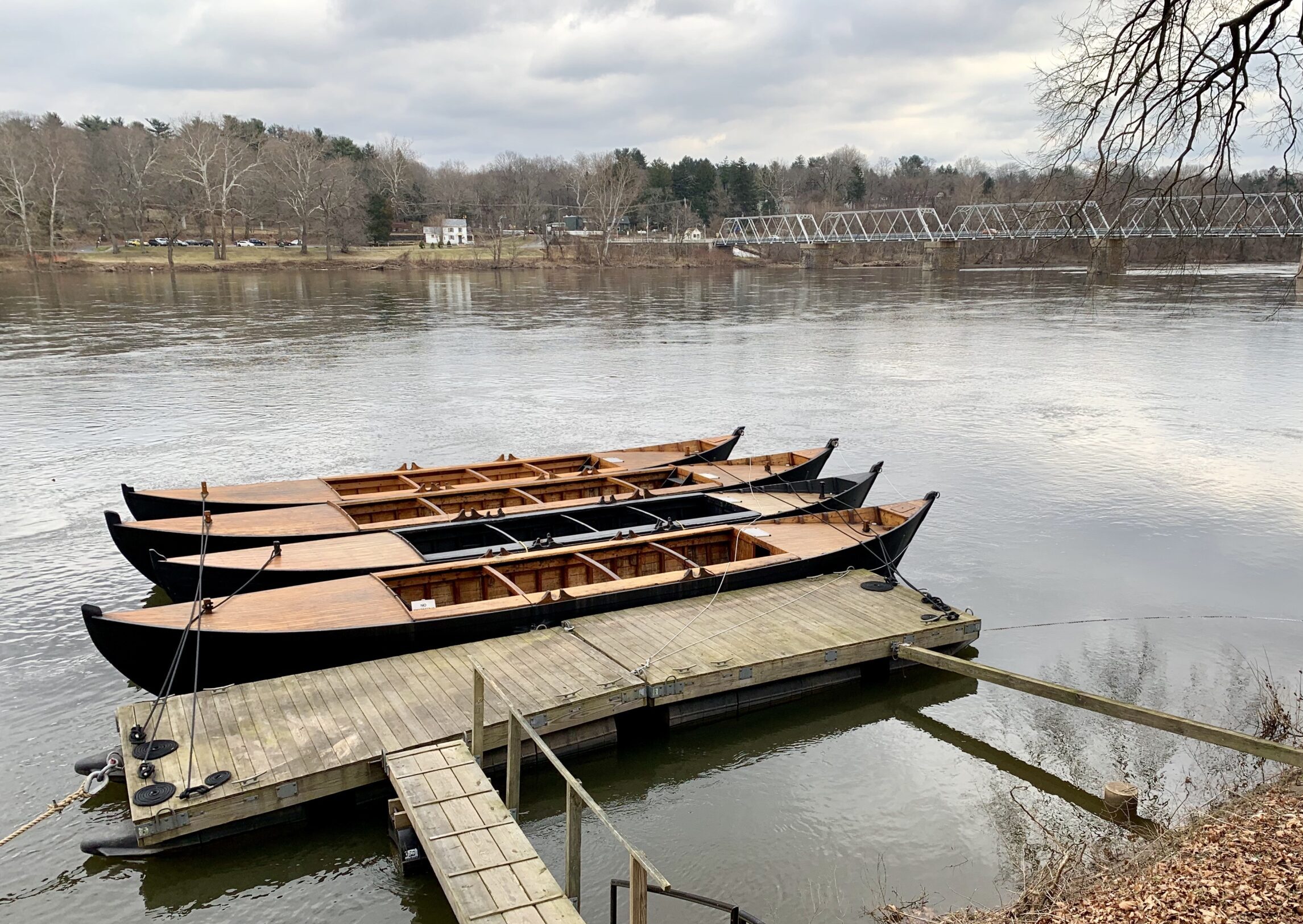
Every morning, weather permitting, I drive the six miles from my house in Trenton to Washington Crossing State Park and walk the paved drives that cut through the historic site connecting picnic groves, parking lots, a nature center and an outdoor amphitheater. There’s also a small museum with Revolutionary War artifacts which are housed in the visitors’ center. I enjoy this daily walk, a meditation if you will, up and down hills and across streams as my movement sends deer and rabbits scattering into the safety of the roadside verge. Sometimes, if it’s not too muddy following a rain or snow storm, I walk along a trail, a remnant of the Continental Lane, a rough-cut path through the woods leading from the Delaware River to Bear Tavern Road. This is the route that Washington took after crossing the icy river on Christmas night 1776.
The same route my fifth great grandfather, John Stark, trod with his New Hampshire regimen of volunteer soldiers. I feel connected to him whenever I walk that path and sometimes I believe I can sense the presence of the other twenty-four hundred men under Washington’s command as they made their way to Trenton to roust the Hessians barracked there.As a kid I’d listened to my grandfather tell stories about General John Stark of New Hampshire. Stark was a colonel when he crossed the Delaware River on that Christmas night and fought alongside Washington at the Battles of Trenton and Princeton. He’d also tell me about his role at Bunker Hill and his victory at Bennington.
One of my favorite tales, however, involved a twenty-something-year-old Stark forced to run a gauntlet made up of young Abenaki braves. Stark and a friend, Amos Eastland, had been abducted while checking beaver traps. Both men were forced to run a gauntlet while chanting phrases in Abenaki. Eastman suffered the numerous sticks and clubs hitting him from above while Stark, grabbed a club from a brave upon entering the gauntlet and proceeded to knock down each man standing in line as he made his way through the punishment.
Stark’s words, Live Free or Die, emblazoned on New Hampshire’s license plates, was something I was proud of as a descendant. But the phrase also haunted me, especially when I was requesting conscientious objector status during the Vietnam War. I wondered whether Stark would have opposed that war as I was doing. I also wondered if in taking a stand against all wars, whether I was also opposing my ancestor’s part in the Revolutionary War. In a deep sense, his actions in 1776 made it possible for me to exercise my right opposing the war and becoming a conscientious objector in 1970.
Now, as the long Fourth of July weekend dawns, I take time to consider notions of freedom and war while reflecting on my role, now more than fifty years ago, as a pacifist who fulfilled two years of service to his country as a conscientious objector during the military misadventure of the Vietnam War. I also pause to ponder the tug-of-war between supporting and opposing US military engagement that has continued since Vietnam; operations with catchy names like: Urgent Fury-Grenada (1983), Just Cause-Panama (1989), Desert Storm-Iraq (1991), Restore Hope-Somalia (1992/93), Bosnia/Kosovo (1995), Enduring Freedom-Afganistan (2001), Iraqi Freedom-Iraq (2003), and Odyssey Dawn-Libya (2011). And if the past is prelude to the future, notwithstanding the current global crisis in Ukraine, I’m sure that somewhere deep in the Pentagon, someone is sitting at a computer using a word or phrase generating app to come up with a list of new public-friendly terms for yet to be named armed conflicts.
And yet, I come back to thinking about General John Stark, especially his final remarks to the “brave sons of liberty” who fought beside him at the Battle of Bennington on August 16, 1777. In 1809, Stark, nearly 81 years old and in poor health, was asked to attend a gathering of his former soldiers to commemorate their victory thirty-two years earlier. Stark was not able to endure the journey from Deerfield, NH to Bennington, VT. Instead, he penned a letter and included a toast to be read to his men at the gathering. Stark closed his letter with these words: “I shall remember gentlemen the respect you and the inhabitants of Bennington and its neighborhood have shown me, until I go to the country from which no traveller returns.” The toast followed: “Live free or die; Death is not the worst of evils.”
Stark’s words officially became the New Hampshire State motto in 1945. The appropriation of his toast lives on as a misunderstood slogan, a commercially viable movie franchise, an episode of The Sopranos, a National Geographic television series; shouted in the halls of The Capitol on January 6 and during COVID anti-mask protests. And with each utterance of the phrase, Live Free or Die, its meaning is altered in the process of ever-evolving worldmaking. I can only wonder what Stark—Green Mountain Boy, Rogers’ Ranger, and Revolutionary War hero—would think about his words today and whether his sentiment has held true over time.
Banner photo: Durham boats similar to the ones used during Washington’s Crossing of the Delaware, Christmas 1776.
Inset photo: General John Stark by Alonzo Chappel (1828-1887).
